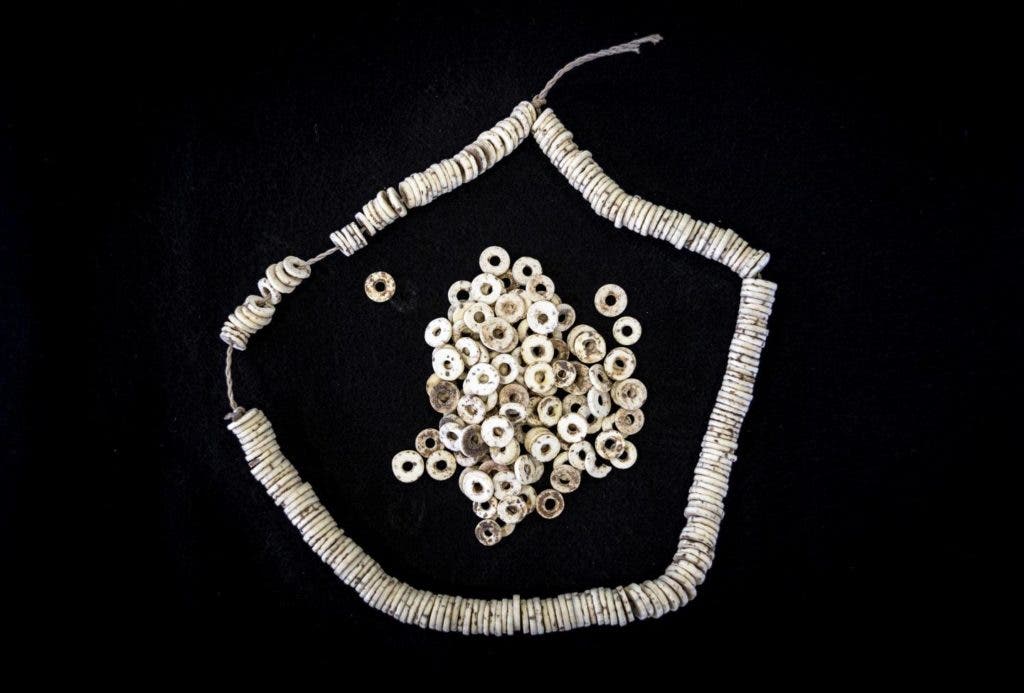
Jewelry and trinkets are ever-present in mankind’s evolution. Since the dawn of time, humans loved having pretty objects around them — and they sometimes went to great trouble to achieve this goal. Humans aren’t unique in enjoying trinkets, but we are unique in our ability to create such objects.
Whether it’s metal, rocks, or organic material, mankind has created a dazzling array of adornments. So deep is our fascination with these objects that oftentimes, researchers can tell many things about a specific culture just by looking at the adornments they crafted. This is exactly the case with ostrich eggshells, the authors of a new study say: they are a good indicator of cultural shifts in ancient Africa.
Ostrich eggshell beads are some of the oldest ornaments ever made by mankind. Humans have been making them for at least 50,000 years and remarkably, some of them have been preserved well enough to survive to this day. Previous research has shown that 2,000 years ago, these beads exhibited an important change in size, becoming much larger. Now, a new study by Jennifer Miller and Elizabeth Sawchuk investigated this idea even further, analyzing the evolution of this type of beads in previously un-investigated parts of Africa.

Miller and Sawchuk analyzed evidence from 30 archaeological sites spanning the past 10,000 years of human history on the continent. In total, they recorded the diameters of 1,200 ostrich eggshell beads, including some which had never before been analyzed.
“These beads are symbols that were made by hunter-gatherers from both regions for more than 40,000 years,” says lead author Jennifer Miller, “so changes – or lack thereof – in these symbols tells us how these communities responded to cultural contact and economic change.”
As expected, the authors found a significant increase in bead size some 2,000 years ago. This change is linked to the emergence of a new culture in the area, probably the same culture that brought about new herding practices. But this was only the case in southern Africa.
In eastern Africa, the authors found no correlation between bead size and herding or this new culture. This suggests that the beads tell a more nuanced story, and bead size alone is not a sufficient indicator of culture in Africa.
These differences are subtle, and more work is needed to understand what it all means. But these shifts tell an interesting story and raise even more interesting questions. For instance, the fact that 2,000 years ago, bead size changed in some parts of Africa but not in others indicates significant differences across cultures. This may be because local foragers adopted herding while retaining their bead-making traditions, because migrant herders possessed similar traditions prior to contact, and/or because incoming herders adopted local styles — but it’s not exactly clear yet.
“In the modern world, migration, cultural contact, and economic change often create tension,” says Sawchuk, “ancient peoples experienced these situations too, and the patterns in cultural objects like ostrich eggshell beads give us a chance to study how they navigated these experiences.”
Lastly, it’s remarkable that something as small as eggshell beads can tell such stories, Miller concludes.
“Ostrich eggshell beads are small and tend to be overlooked in archaeological analysis, but they have the power to tell big stories about ancient human relationships. Today, we encounter economic change, cultural contact and immigration–people 5,000 years ago experienced these things too, and the beads give us a chance to understand how they dealt with it.”
The study has been published in PLoS ONE.






